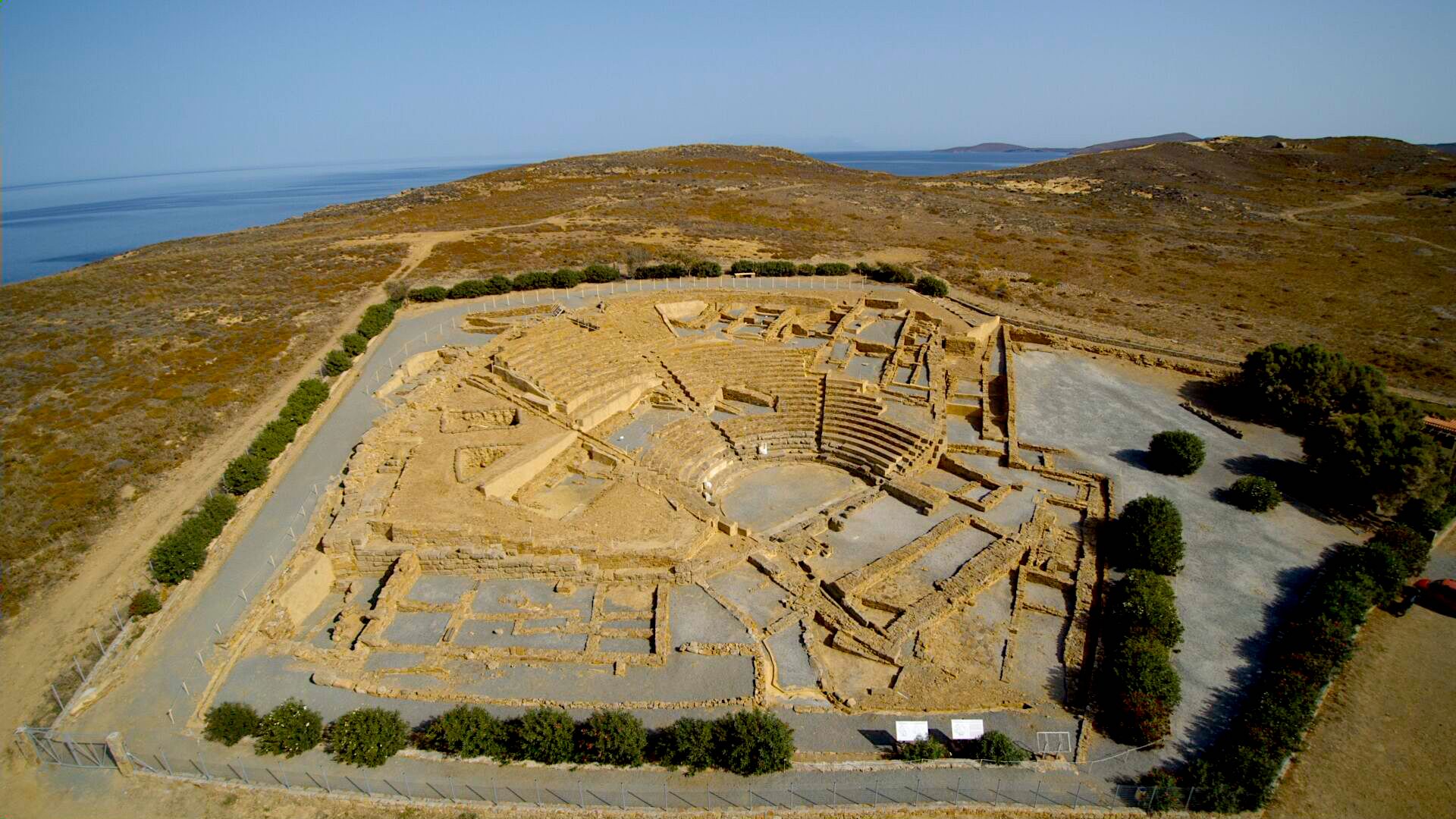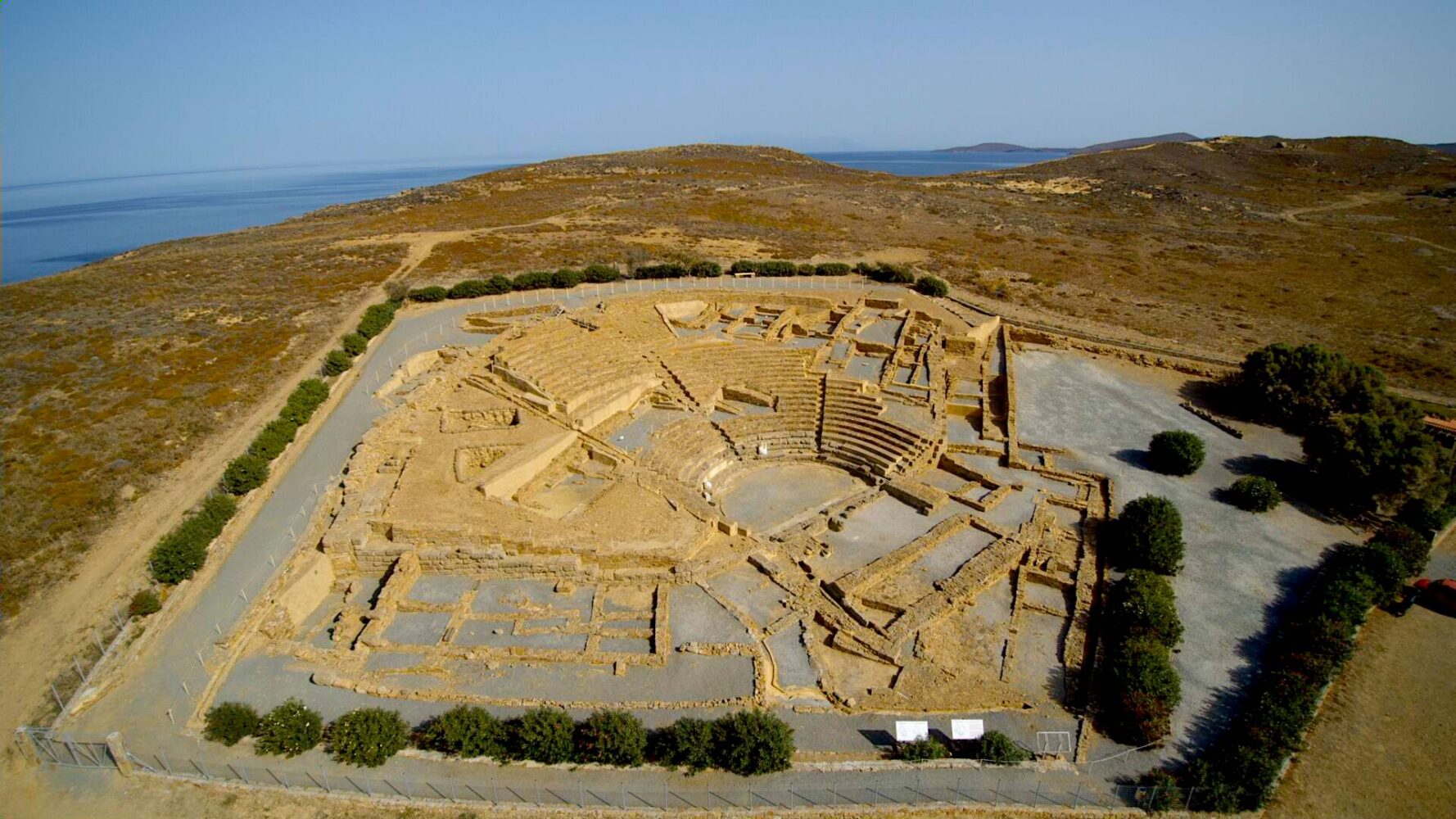
Ancient theatre of Hephaistia
Description
The most important monument of the ancient city of Hephaestia which is directly linked to the settlement of the Athenians on the island. Its hollow was built on the semi-rocky slope of a hill, on earlier sanctuaries of the 7th – 6th century. B.C. Its main elements are the orchestra, the stage, the hollow and the aisles. Its construction includes five building phases. To the oldest, at the end of the classical period, belong the first ten rows of pews, the circular orchestra, the rectangular stage and the water runoff system of pews. In the second phase, in the Hellenistic period, the epitheatre and the retaining walls of the passages were built. The retaining walls of the perimeter walls date to the third, also Hellenistic period. In the Roman period the stage building was enlarged at the expense of the orchestra, with the addition of the proscenium, the backstages were made, the hollow was repaired and the old duct replaced. The floor of the orchestra was covered with limestone slabs. Finally, in the last phase, south of the theater, monumental buildings were built next to the parapet walls.

